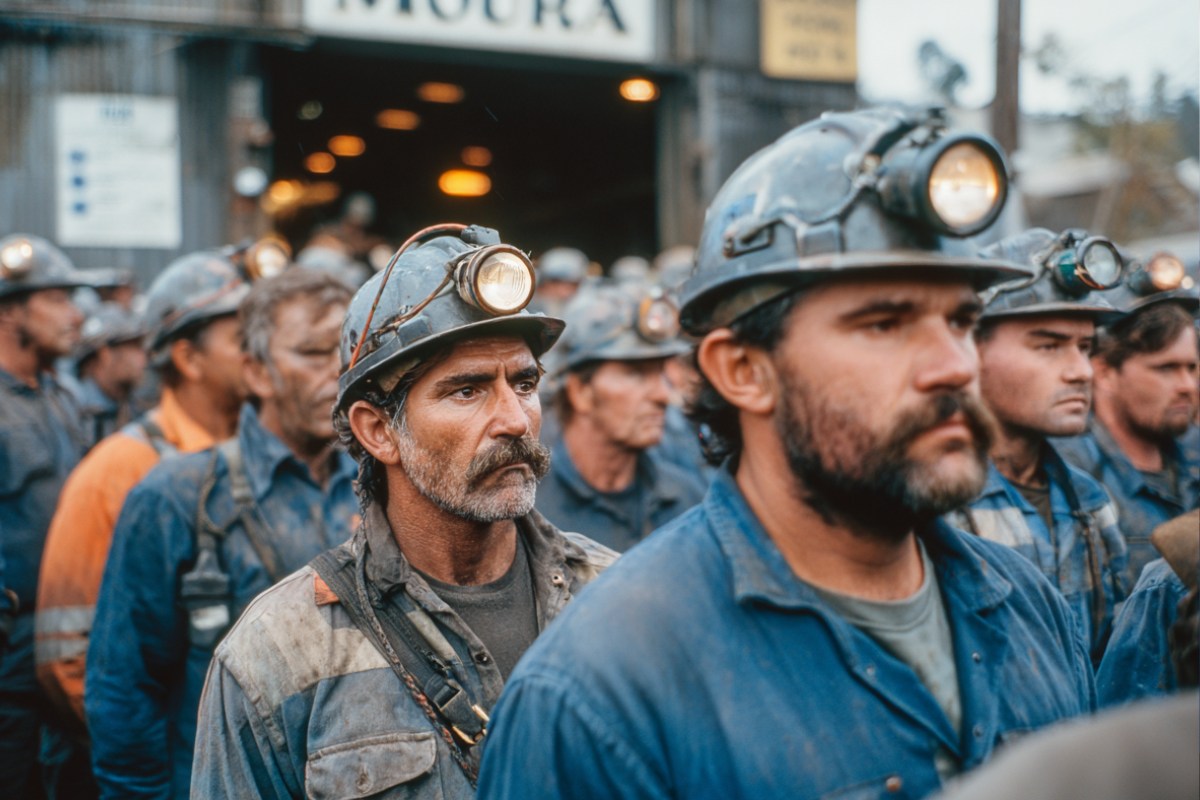From Tragedy to Transformation: How Queensland's Worst Work Accidents Changed Safety Laws Forever

Every workplace safety regulation has a story behind it, and that story is often a tragic one. Queensland's journey from basic workers' compensation to sophisticated preventative safety frameworks has been shaped by dire events that led to much needed change, and this evolution reflects both the human cost of workplace dangers and our collective commitment to ensuring workers return home safely.
The Origins of Queensland's Safety Framework
Queensland's approach to workplace safety began with a focus on compensation rather than prevention. The state's first Workers' Compensation Act of 1905 established a rudimentary no-fault system where injured workers received financial support without having to prove employer negligence.
Although this early legislation was revolutionary for its time, it only provided minimal protection. The focus remained on compensating workers after injuries occurred instead of trying to prevent them in the first place. As industrial development accelerated across Queensland, the issues with this approach became more and more apparent.
By the 1970s, Queensland had established a Workers' Compensation Board to deal with claims, but workplace fatalities and serious injuries continued at an alarming rate and the lack of preventative measures and proper safety management became increasingly difficult to ignore.
When Disaster Strikes: Catalysts for Change
Throughout Queensland's history, there have been several high-profile workplace tragedies that have served as powerful catalysts for legislative reform, exposing critical gaps in safety regulation and leading to meaningful change.
The Electrocution Crisis (1995-1999)
Between 1995 and 1999, Queensland experienced a devastating series of workplace electrocutions. Nine separate incidents resulted in 12 deaths, with five of them following distressingly similar patterns and involving young workers. These tragedies prompted an investigation by the Division of Workplace Health and Safety and the Electrical Safety Office.
The Queensland Ombudsman's subsequent review of these incidents highlighted systemic failings in both prevention and enforcement, which directly influenced the state's approach to electrical safety regulation and prompted more stringent training requirements and heightened oversight.
Mining Industry Tragedies
Queensland's mining industry has experienced several recurring safety crises that have shaped regulatory approaches in the sector. Between 2000 and 2019, 47 fatalities occurred in Queensland mines and quarries, resulting in comprehensive reviews of safety practices.
The most notable incident occurred at Moura in 1994, when an underground coal mine explosion claimed the lives of 11 miners. This disaster followed previous incidents at the same location in 1975 and 1986 that had already resulted in 36 deaths collectively. The repeated nature of these tragedies highlighted the industry's failure to implement lasting safety reforms.
The 2019 Brady Review was commissioned after a spate of mining fatalities and identified a troubling cyclical pattern: safety would improve in the immediate aftermath of disasters but gradually deteriorate as memory of the incidents faded. This review recommended fundamental changes to the industry's approach to safety, focusing on creating High Reliability Organisations and addressing the normalisation of risk.
Read more about Moura incident on our article about transformation of mining safety regulations in Australia.
The Dreamworld Tragedy (2016)
Perhaps the most publicly visible workplace safety incident in Queensland’s recent history happened at the Dreamworld theme park in October 2016, when four visitors tragically lost their lives because of a catastrophic malfunction on the Thunder River Rapids Ride.
The subsequent investigation revealed a series of profound safety management failures, including inadequate staff training, insufficient maintenance protocols, and a lack of emergency response planning.
This high-profile tragedy, which occurred within months of another incident at Eagle Farm Race Course in which two workers were crushed by a concrete slab, prompted the Queensland government to conduct a comprehensive Best Practice Review of Workplace Health and Safety.
This review revealed serious gaps in safety regulation, particularly regarding public safety in recreational facilities, and led to 20 recommendations, including the introduction of industrial manslaughter provisions with maximum penalties of 20 years imprisonment for individuals and fines of up to $10 million for corporate offenders.
Legislative Evolution: From Compensation to Prevention
Queensland's workplace safety legislation has changed substantially in response to these and other tragedies. The most significant shift occurred with the introduction of the Work Health and Safety Act 2011, which came into effect on January 2, 2012.
This legislation is based on nationally harmonised model laws and represented a fundamental shift from a hazard-based approach to a comprehensive risk management framework.
The Act established:
- Clear duties for persons conducting a business or undertaking (PCBUs)
- Due diligence requirements for officers
- Enhanced worker participation through health and safety representatives
- Stronger enforcement mechanisms, including increased penalties for non-compliance
Following the Dreamworld and Eagle Farm tragedies, Queensland strengthened its safety framework even further with the 2022 Review of the Work Health and Safety Act, which had a particular focus on worker participation mechanisms. This ongoing evolution is indicative of the recognition that effective safety management requires continuous improvement and adaptation to emerging risks.
The Human Impact: Stories Behind the Statistics
While legislative changes are important, they only tell one part of the story.
Recent statistics reveal that workplace fatalities are still a serious concern in Queensland, with 49 worker deaths recorded in 2022 (the second-highest number after New South Wales). Each of these deaths represents a real person whose life came to a tragic and premature end, as well as a family left to deal with unimaginable loss.
For both safety professionals and business owners alike, these human stories are a powerful motivation for implementing robust safety systems that go beyond mere compliance; reminding us that workplace safety is not just about following rules but protecting people first and foremost.
Modern Approaches to Workplace Safety
Today's approach to workplace safety in Queensland is the result of lessons learned over the course of decades of tragedy and reform. Modern safety management emphasises:
- Proactive risk assessment rather than reactive responses
- Systematic safety management through documented processes and procedures
- Worker participation in identifying and addressing safety concerns
- Leadership accountability through due diligence requirements
- Continuous improvement through regular review and adaptation
Technology has also played a key role in transforming workplace safety, with digital tools enabling better hazard identification, incident reporting, and trend analysis. From real-time gas monitoring in mines to comprehensive safety management software, these innovations help avoid the types of incidents that have led to preventable deaths in the past.
Looking Forward: Emerging Challenges
Despite significant progress, workplace safety in Queensland faces a variety of ongoing challenges. Recent incidents, including a helicopter collision in 2023 that claimed multiple lives, are a reminder that vigilance remains essential across all industries.
Emerging workplace models, including the gig economy and remote work, create new safety challenges that require innovative regulatory approaches. Psychosocial hazards, including workplace stress and bullying, are increasingly recognised as significant safety concerns which require specific management strategies.
Climate change also presents evolving risks, with extreme weather events creating new hazards for Queensland workers across multiple industries. From construction to emergency services, adapting to these changing conditions requires ongoing assessment and planning.
Lessons from Queensland's Safety Journey
The evolution in Queensland's workplace safety protocols offers valuable lessons for safety professionals, business owners, and workers:
- Safety requires vigilance: the cyclical pattern of improvements followed by complacency identified in the mining industry applies across all sectors. Maintaining high safety standards demands constant attention.
- Worker involvement matters: effective safety management depends on meaningful worker participation. Those actually doing the work often have the most valuable insights into potential hazards and practical safety measures.
- Leadership sets the tone: from the boardroom to the shop floor, leadership being committed to safety is essential for creating workplace cultures where safe practices are valued and prioritised.
- Learning from incidents is crucial: each workplace incident, regardless of whether it results in harm, is an opportunity for learning and improvement. Thorough investigation and urgent implementation of corrective actions help prevent recurrence.
- Regulation alone isn't enough: while strong regulatory frameworks are important, genuine safety improvement requires commitment at all levels of an organisation and must also be supported by effective systems and processes.
Also read: Safe work is everyone's responsibility
The Legacy of Tragedy: Honour Through Action
The most fitting memorial for those who have lost their lives in Queensland workplaces is to ensure their deaths were not in vain. By learning from past tragedies, implementing robust safety systems, and maintaining unwavering vigilance, we honour their memories and protect future generations of workers.
For safety professionals, this means staying informed about emerging risks and best practices, and for business owners it means investing in the latest safety systems and fostering cultures where safety is valued above all else. For workers, it means actively participating in safety processes and speaking up about concerns.
Queensland's journey from tragedy to transformation is a timely reminder that safety improvements often come at a terrible cost. Our collective responsibility is to ensure those lessons are never forgotten and that every worker returns home safely at the end of each day.
If it's time to talk, we're here to help. Get free advice direct from our solicitors today.





